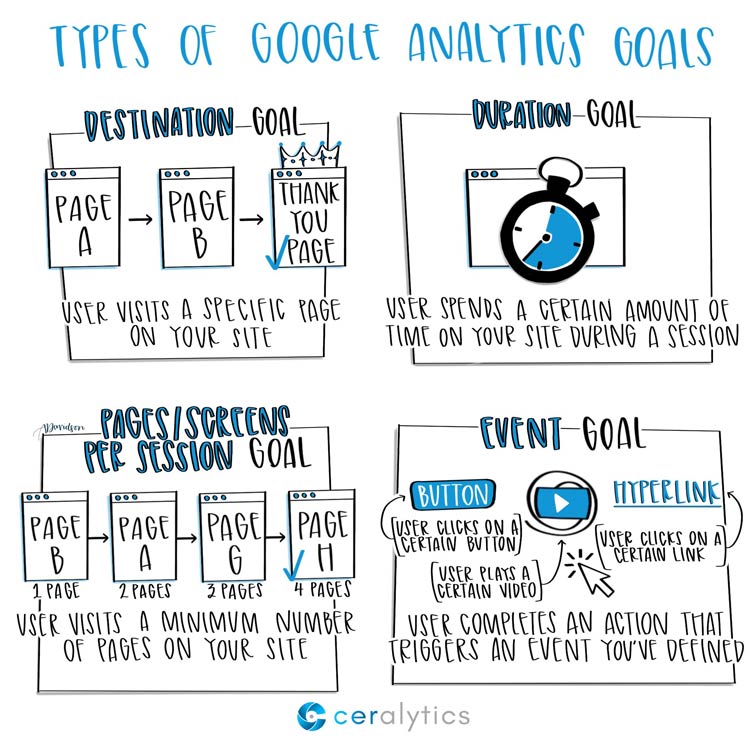What Data Is Google Analytics Goals Unable to Track: Discover the Limitations
What Data Is Google Analytics Goals Unable to Track: Discover the Limitations
Blog Article
Revealing the Blind Attractions: Recognizing What Google Analytics Goals Can not Determine
In the world of digital analytics, Google Analytics stands as a powerful device for tracking and examining on-line user interactions. Comprehending what Google Analytics goals can not gauge is crucial for getting a detailed sight of individual actions and involvement.
Individual Actions on External Platforms
Recognizing just how users connect on external platforms is vital for optimizing on the internet techniques. Outside systems, such as social networks networks, referral web sites, and on-line discussion forums, play a substantial role in driving website traffic to a business's web site. By analyzing customer actions on these systems, businesses can acquire important insights into the efficiency of their advertising efforts and the choices of their target market.
One secret element of customer habits on external platforms is the recommendation resource. By tracking where the customers are coming from, companies can recognize which platforms are driving the most traffic to their website. This information can aid companies designate their sources extra successfully, concentrating on the systems that yield the very best outcomes.

Offline Interactions and conversions
Evaluating user behavior on outside platforms offers beneficial insights into online strategies; nonetheless, considering offline conversions and interactions is just as vital for a detailed understanding of a business's overall efficiency. While Google Analytics stands out at tracking online interactions, it drops brief in capturing the complete consumer trip that commonly includes offline touchpoints. Offline conversions, such as in-store purchases or phone questions, play a substantial role in lots of services' success. Disregarding these communications can cause a distorted sight of the efficiency of advertising projects and general company efficiency.
Acknowledgment Beyond Last Click
When diving into the world of digital advertising analytics, it comes to be important to look beyond the solitary touchpoint of the last click for an extra detailed understanding of acknowledgment. While Google Analytics offers valuable insights into individual habits, relying exclusively on last-click acknowledgment can be restricting - what data is additional hints google analytics goals unable to track. Acknowledgment versions that exceed the last click offer a more nuanced view of the client trip, considering all the touchpoints that bring about a conversion
Acknowledgment beyond the last click allows online marketers to designate credit rating to various communications along the conversion course, providing a clearer picture of the performance of various marketing networks. By discovering multi-touch acknowledgment designs such as linear, time degeneration, or position-based acknowledgment, services can better allocate their my response advertising and marketing budget plans and enhance their strategies for optimal impact.
Recognizing the influence of each touchpoint in the conversion procedure is essential for making educated decisions and making best use of ROI. By welcoming attribution past the last click, services can acquire much deeper insights right into customer behavior and tailor their advertising initiatives better.
Cross-Device and Cross-Browser Tracking

In a similar way, cross-browser monitoring complements cross-device tracking by catching individual actions as they switch over between different web browsers. Comprehending just how users engage with internet sites on numerous browsers can help marketing professionals maximize their on-line experiences to ensure consistency and capability throughout different systems.
Qualitative Data and Customer Intent
Understanding user intent with qualitative information analysis is essential for developing targeted electronic marketing techniques that reverberate with the needs and preferences of the target audience. Qualitative data offers insights right into the 'why' behind user actions, shedding light on inspirations, feelings, and choices more information that quantitative data alone can not capture. By assessing user responses, remarks, and communications, marketing experts can discover useful info about individual intent, permitting them to tailor their messaging, content, and offerings to much better straighten with what their target market is looking for.
Qualitative information likewise helps in comprehending the context in which users involve with a site or app. This contextual understanding makes it possible for marketing experts to develop even more individualized and appropriate experiences, eventually driving higher involvement and conversion rates. By diving right into individual intent through qualitative information analysis, organizations can get a deeper understanding of their target market, resulting in extra efficient marketing methods that meet customers' assumptions and needs.
Final Thought
In conclusion, Google Analytics goals have constraints in determining customer behavior on exterior platforms, offline conversions, attribution past last click, cross-device and cross-browser monitoring, and qualitative data connected to customer intent. what data is google analytics goals unable to track. It is essential for organizations to be knowledgeable about these blind areas in order to supplement their information evaluation with other tools and approaches to gain a much more thorough understanding of their audience and enhance their total electronic marketing methods
By evaluating customer habits on these systems, businesses can gain important understandings right into the performance of their advertising and marketing efforts and the choices of their target audience.
Examining customer behavior on external platforms provides important insights into on-line approaches; however, thinking about offline conversions and communications is just as crucial for a thorough understanding of a firm's total efficiency.In electronic advertising and marketing analytics, relocating past last-click acknowledgment to discover cross-device and cross-browser tracking is essential for gaining a holistic understanding of user interactions across various systems and tools. By analyzing user feedback, remarks, and communications, marketers can uncover valuable information concerning customer intent, permitting them to customize their messaging, material, and offerings to better line up with what their target market is looking for.
By delving into user intent through qualitative data analysis, organizations can obtain a deeper understanding of their target audience, leading to much more effective advertising and marketing approaches that fulfill individuals' expectations and demands.
Report this page